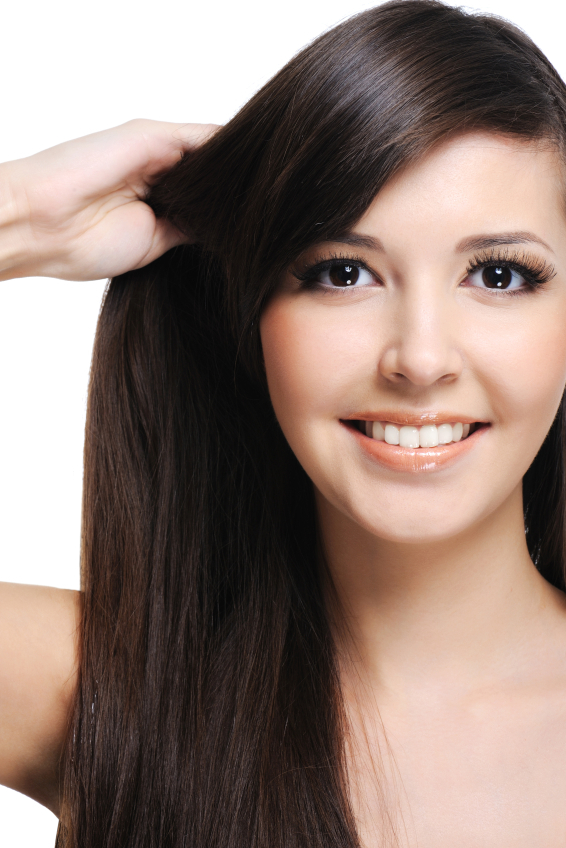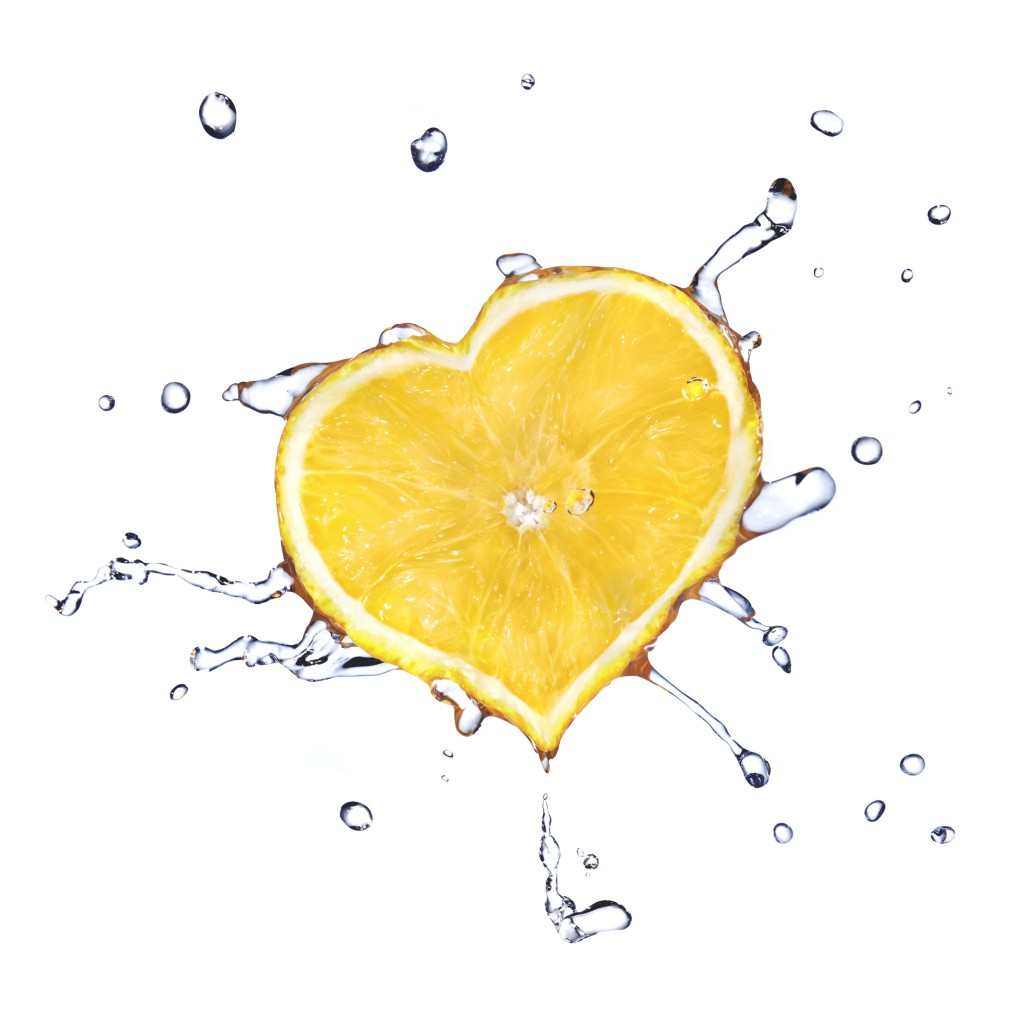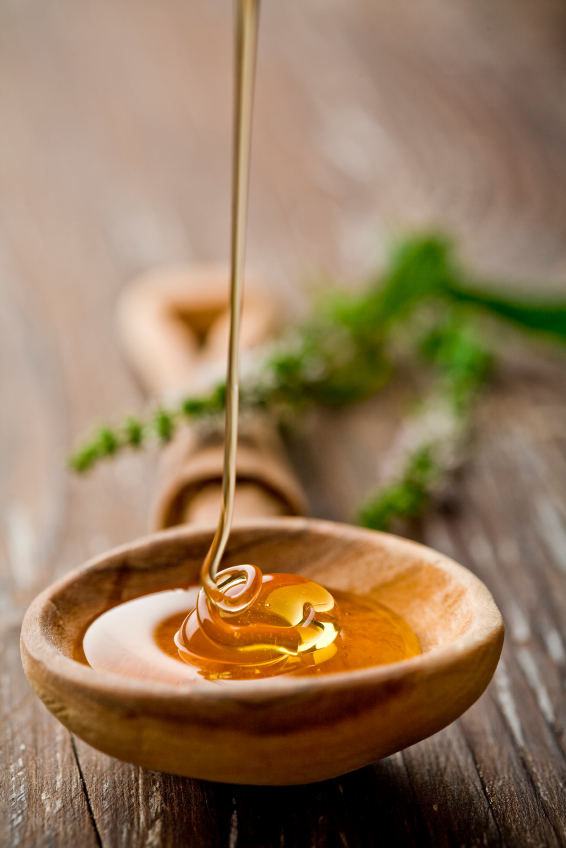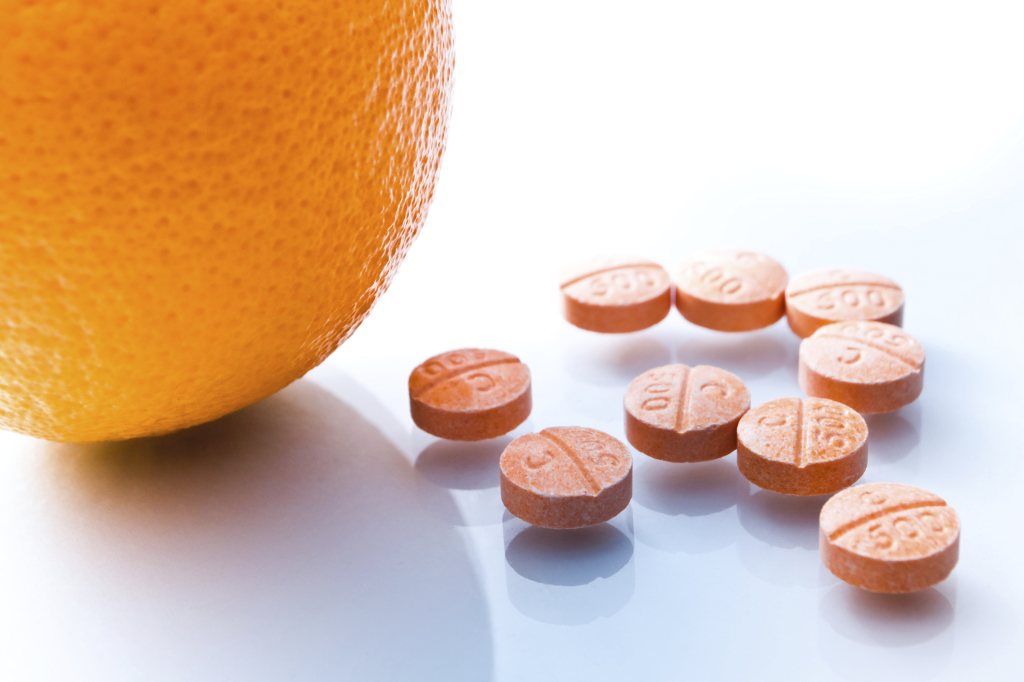Henna and Indigo are natural dyes which are great natural alternatives to commercial hair colour. With each application, henna becomes more difficult to remove. Can henna and indigo be removed from the hair naturally and safely? This question appears on the forums often, and one often replies with “You don’t date henna, you marry it”. How true is this statement? Now, to see just how true this statement is, let’s have a closer took at how henna works to colour your hair.
It is a common misconception that henna only coats the outside of the hair. Yes, henna does cover the outside of the hair somewhat, but the resins (which are temporary) are responsible for this. What truly happens is the dye within henna, the lawsone molecules, actually penetrate the hair shaft and attach to the keratin (hair protein) within over time. So, the more one applies henna to their hair, the more lawsone gets attached to the keratin within which in turn strengthens the hair. This is how henna builds up and gets darker and more prominent over time. This is why those that have bleach damage may get poor coverage, as bleach can actually diminish or break the keratin bonds within the hair which give the henna a poor base to work with. For those with bleach damage, protein treatments (such as protein fillers used before dying the hair, or other protein treatments) are essential prior to hennaing to get an even ‘base’. Now, how hard is it to actually remove henna from there hair? Over the last few years, I (Vanessa) have actually experimented with various natural and a few non-natural options to see if I could lighten my henna and twice henndigo’d hair. Most of these treatments save the honey treatment were done on hair collected from my hair brush.
My (Vanessa) hair stats are: 1b-1c/f-m/ii-iii; I have around 5 years of henna (henna every 1-2 months) and one or two applications of henndigo, plus 3 2-step henna and indigo black on the underside portion of my hair.
What To Expect
Don’t expect crazy henna/indigo lightening with natural methods on the first few applications. Natural treatments work more gradually than the non-natural treatments. Watch the condition of your hair and do the necessary moisture or protein treatments as needed. A two step henna and indigo is harder (close to impossible) to lighten with natural methods due to the permanency of indigo. Vitamin C treatments may be successful in fading the black of Indigo to a soft brown over time.
Natural Treatments:
Lemon juice: 4 treatments. Applied lemon juice to hair strand. For two treatments, the strand sat in the sun, and the other 2 the hair dryer was used. Dried hair out significantly and caused hair to become brittle. No visible lightening. Not worth it for those that are wanting to grow their hair long. The strand was still dry after 4-5 deep conditionings.
Honey lightening: 8-9 treatments. Hair became very dry, limp, porous and resembled hay. This dryness was not due to honey build up as I did clarify as well as chelate after the treatments, which were followed by deep conditioning. Three Shades lightened in total, but re-oxidised darker 2 shades. Honey produces peroxide. Peroxide is peroxide no matter the source!
Rhassoul and other clays: 8 treatments. Slight henna fading and definite indigo fading as the rinse-out water was a greenish blue.
Yogurt: 6 treatments. These treatments did nothing to lighten my hennaed hair. It did moisturise my hair, though.
Chamomile: 7 treatments. Conditioned the hair, but did not lighten existing henna or indigo.
Warm oil treatments: I tried pulling as much henna would with with olive and various other oils. These treatments also did nothing to lighten my hair.
Non-Natural Treatments:
Anti dandruff shampoos: Dried out the hair. I did see blue from the indigo washing out while rinsing, but there was no noticeable difference once the hair was dry.
Mineral oil: 3-4 treatments. Did nothing to remove henna (old henna or new henna).
Vitamin C treatments: 4-5 treatments. Faded the indigo slightly after each application, but henna did not budge. This was probably the most effective indigo lightening treatment.
What Others Have Tried
Effasol/color b4, colour oops hair dye removers. Many have had success with these. The downside is that the hair will smell sulfur-y or like rotten eggs for a while. For more information, follow <this> link.
Sun in: Sun-in won’t remove the henna totally, just lighten/brighten it. Check out <this> link for more details.
What to Do if Your Henna-Indigo Turns Green?
Don’t panic!!! You need something red or red-orange to neutralise the greenish tones left over from the indigo. Run/bounce/fly out and find something red to cover the green STAT, or henna 2-3 times. A red based manic panic/veggie dye or even red or orangey koolaide would work well. This is temporary, though. Another option to try before applying a red tone over the green is to do vitamin C treatments to fade the greenish tones slightly. Don’t use an ashy tone over the green, it will not neutralise the green.
After Care
With most treatments, a deep moisturizing treatments are necessary as the colour-removal treatments can be rather drying over time. With any peroxide treatments such as sun in or honey/cinnamon/cardamom, add in a protein treatment. If you were lightening a too-dark henna, don’t apply a full strength henna over your lightened hair as this may take you back into the dark tones. Instead, opt to dilute your henna in a gloss with conditioner, cassia or zizyphus.





















I’ve had success fading henna with a mix of dandruff shampoo and crushed vitamin C tablets (or an effervescent vitamin C tablet in a TBSP of water). Be sure to condition afterwards.
Great tips Lisa-Marie!! 🙂
I’m a strawberry blonde all my life, now 68 turning more blonde than strawberry, sure it is gray just dosen’t show yet. Time to do something, had used “JUST FOR REDHEADS” strawberry blonde 5 mo ago did a great job, was very careful about timing (10 min), this time screwed up left on 20 min, looked like CARROT TOP, tried oil no results just used vit c and shampoo for 30 min. Definitely quieted the orange, can live with this or another treatment should bring back strawberry. Never post but felt I should pass on.
Thanks for sharing Peggy. I think another treatment would definitely bring it to a more strawberry tone. You easily achieve that with our Red Raj and Organic Cassia.
I went too dark in the beginning and needed to find a solution. I tried vit C with dawn dish soap and saw good results. Then I tried baking soda and dish soap- also good results, each time I kept a plastic cap on for an hour, then washed and conditioned. I saw more highlights and less dark brown. I am now trying coconut oil for 12 hrs with a cap. If this does not bring it too a medium brown, I will be trying Sun In. Overall I love the henna and the glossy shiny results-just should have done a medium brown, not dark brown. Hope this is helpful!
Thank you! Great information.
I went from being a bright blonde to dying my hair brown synthetically. I wanted a red so did 2 bright red henna treatments. It looked amazing but I never intended to ‘marry’ it. I’ve been doing warm oil treatments, even parts olive and coconut and using anti dandruff shampoo. This is working fairly well. It’s a slow process but I’m optimistic. I’m thinking of trying a vitamin C treatment next but have been told never to use lemon if you want to strip henna as it strengthens the colour, so I’m continuing on with the research.
Jayne great feedback, thank you!
(Late to the party as usual!)
I’ve been henna-ing once or twice a month for a little under 2 years and never the same recipe twice (if only because I’m the world’s worse dabbler – I can never remember what and how much I’ve tinkered, and this is also why I can never make curry and chili the same way twice)
Anyway, I wanted to try a couple of shades lighter. After mind-boggling sessions recipe-reading I gave it a shot.
Eventually I found a really good mix – 1 part honey, 2 parts olive oil and some cinnamon for good measure. I did it three nights running and it actually made a visible difference. Normally I’m a gorgeous deep red bordering on burgundy, and after the treatments I was considerably less burgundy.
The only downside? I smell like the dessert tray at the Mirage. And our doggie won’t quit trying to lick me half to death 🙂
Hi Tess. Great to hear from you! WOW that’s really great! I love that. Thanks for sharing. I’m so glad to hear someone has had some good results. The scent though is such an easy fix 🙂 Just add your favorite essential oils which at Henna Sooq we carry so many for you to choose from. Add EO’s and no more dessert scent even though, that sounds pretty yummy!
Oh. Removing henna! A story of my life… I will begin where the beginning is. Most of my friends are redheads (lucky right?) and i am a naturally light-blonde (around level 9 on professional charts). So i was talked into dying my hair red, and i didn’t want to harm it, so i went for henna. Little did i know that all of my being would be against, and that i would start regretting it so much so soon! I have had experience with henna before, and i successfully removed it once (!) and with great loss. Right now i am putting my best effort into getting rid of it, but i don’t want to high-light it out again, so i have tried everything a standard shop gives you. I tried oils- completely useless! So i have done 3 colourb4 and now have tried to dye it out, fair to say, the colour has faded a lot, but never to the level my roots are at. However it is still pretty much red, very nice strawberry blond. But i am a really bright ash-blond, so it looks ridiculous. preying and hoping that it will go away soon!
I have done the one step henna/indigo process for 18 months – but I am allergic to this so I began with coconut oil – left on over night and then washed with Dr Bronners – did this 3 times until I no longer saw brown watter, Then on to Color fix – divided the bottle in 2 – 1 2-hour process and 1 – 3 hour process. -followed up with Tea Tree oil each night applied to hair – saw my dark blonde hair and the sparkle of grey hair. Color Oops – very messy but left on for 2 hours – a little more fading at the ends, then Tea Tree oil on the hair as a dressing worn all day and evening. Did a mix of Lemon juice with ascorbic acid and citric acid, sprayed this on my hair and left it there for 2 hours – very dark water in the tub as I washed it out! My dark blonde hair is back and I will continue with tea tree oil overnight with the lemon spray in the morning
Nora I’m not really sure as it could even be a medical issue or if you’re taking meds that could affect it too. I don’t know enough to know why all of this could happen. Henna powder alone is the best over other mixed henna blends sold commercially and we have a lot of growth and strength products at http://www.hennasooq.com. Have you tried ours as yet?
Thanks Nora. Please let me know once you need more assistance with y our Henna Journey too! 🙂
I’m confused what you’re saying about the honey treatment. You say it lightened, but then darkened because it got re oxidized? Was that with the henna or indigo?
I have dyed my hair once with red henna and I’m trying to get it to fade faster.
Usually it’s the honey treatments that cause fading/lightening. When repeatedly using henna and/or indigo that causes the color of your hair to darken. We hope this helps.
Did you mix your henna with acid mixes instead of water? Did you henna your hair too often? Some skins cannot stand too much acid, my hair did not like the acid mix (was getting thinner and was loosing hair), as soon as I switched to just water the problem stopped! Even the color is better and does not fade at all. Also, don’t keep it on your head too long. If you mix it with hot water, 2 or max 3 hours will be enough. More than 3 hours can make some people’s head skin go mad and you might loose hair. I henna every 6-8 weeks, not more often than that. Because henna re-mixes slightly at every wash, the growth is not very obvious.
Hello. You can use either an acid liquid or water. This article was written by a blogger that is no longer with us. I’m not sure if you are replying to another comment or the blog poster. Sorry for my confusion. Please let me know. Thank you for your feedback!
Hi Khadija, I did not realize that the blogger left…too late 😉 My head skin did not like acid, much better simple water for me 😉
Yes me too! I prefer to use water in my henna for hair recipes 🙂
I’m so relieved to say I got a LOT of the red henna out of my hair. I’m a natural redhead so I threw caution to the wind and used red henna that I got on sale. Major duh move. My natural color tends to gold/copper, not red. The result was not flattering and I wanted it OUT. I oiled my hair overnight and the color didn’t budge, so I moved on to something stronger. I used John Frieda Go Blonder SHAMPOO and let it sit on my hair for 35 minutes two different times. This shampoo uses lactic acid and citrus, so it will exfoliate and potentially dry. I deep conditioned w a restructuring conditioner because my hair is curly and normal to dry even without soaking it in shampoo. I want to be clear, I used the SHAMPOO which uses lactic acid, not the spray which has peroxide (and a lot of complaints about it). If I have any negative consequence, I’ll come back and update it, but I’m happy I did this. I will be using cassia w many 25% henna from now on, if at all. What a journey…
Hi Coraline. Thank you so much for sharing! What a journey 🙂 Keep us posted as to your results. I’m curious. What color did you want to achieve?
Good morning Coraline. Absolutely. Sounds like your hair is very healthy and porous that it absorbed the henna really well. We’d love to see the color you’re getting. If you have any photos please share them here 🙂
This is my natural color, taken a year ago before any henna. https://uploads.disquscdn.com/images/d0a4f11d12d23f8073772854364805cc076e7d7ea2bea277e01b29d642e57a11.png I am thrilled to see this bc it confirms for me that I got the red henna out! (Meaning that my hair looks the same now) Having red hair I didn’t expect red henna to have a big impact, but again it gave a red-like-the-color-red tone. I prefer my natural color which suits my skin tone. Like I mentioned before I think I’m a cassia girl! 🙂
The color is really beautiful. You could definitely just do cassia. Let me know when you have new pics of your hair with cassia that you can share 🙂
Hi Steph. Oh we’re so sorry to hear. Have you tried any of our tips to remove the henna coloring?
Hi I’ve tried the oil and antidandruff shampoo. It’s mostly the indigo that is the problem. So how would i go about doing the vitamin c treatment, and what is the clay treatment? Thank you
Hello. Sorry Steph, I can’t see the conversartion thread in the platform I’m using to reply to your comment in. Are you trying to fade your henna out or just the indigo? OR what are you trying to do? Clarify?
OH you’re reply thread just popped up finally. THE clay treatment would be through using our rhassoul clays to pull out the color. Vitamin C treatment might work really well for you. Sounds like your hair is very porous in general and it might be that you have to recolor over it. HAVe you also tried honey to naturally lighten your hair?
Hi! Sorry what I’m trying to do is fade the indigo. I can see the henna underneath (very close to my natural colour) but without damaging my hair too much
I added a few more replies after I realized what you were trying to achieve. Tyy those tips out. Let us know how it turns out.
So sorry to hear AnnaW. Yes it’s pretty permanent. Some people just have extremely porous hair and the coloring won’t budge.
If you’re blond Henna will not go away easily…I think it may be a year or so, but who knows. Color Oops does NOT get rid of Henna, although it might lighten it by a shade or two. Henna on brown hair however, fades sooner.
For the first time I tried henna for the first time, my natural hair is light brown, I wanted to go for a natural reddish tint on my hair, but instead I have a purple hue, fortunatly I didn’t apply it all over my hair, I’ve been told several times what happened to my hair, and I don’t know what…. I used very little can I do something about it? Please help.
Did you use a product that contained indigo? Did you purchase henna from Henna Sooq?
I was only henna and no I didn’t purchase it there
You may want to color over it again to get rid of the tone it came out as your easiest solution. I definitely recommend our Red Raj and you may need some indigo, a small amount to keep it a little bit more brown.
Thank you! You are so helpful, I’ll try your recommendations .
Welcome! Let us know how it turns out.
Hi Oliver. What are you trying to achieve? Just a dark brown? You can try to lighten it or has it faded some?
Some has faded but I want it to lighten to dark brown. I’m half Lebanese and have light skin so the black is too dark for me
You may have to use lightening products or make your own DIY lightening recipe from one of our posts/recipes we have here on our blog. You may also want to do henna alone to lighten it up in a reddish way to start. Then later try a brown recipe with our henna and indigo.
Yes you can safely do so.
I have used henna one time before 6 weeks, as a treatment for hair. Now i need to bleach and i don’t know if i still have henna in my hair!.. my colour has not change but i’m afraid of any reaction can damage my hair. My usual shampoo is an anti dundruf, and i occasionally did ghassoul and other clays as mask. Do you think i still have (invisible) henna in my hair?
Thank you
Hello. Did you only use henna? So your hair is reddish tinted? Did you use our henna products. In general if it’s with our henna products you’re safe to use a chemical treatment or bleaching. It is sometimes tough to remove the henna and indigo but really depends on your hair individually.
Hi Eva! What is your natural hair color? It’s tough to fade and remove henna. I would recommend just using henna alone like our Organic Rajasthani Indian henna: http://www.hennasooq.com
I’d also recommend for fading to do cassia and honey treatments together to help remove some of the color. I believe some people also use color fix.
Hi, this post is what i am searching about😍. Actually I have grey hair and I used to do Henna for more than 6 years. Every thing was very nice. I used to mix it with red plant in my country. I just make Henna for the front hair. Now I do not know what happen suddenly my front hair becom very dry like hay , weak and lifeless. 😪😪😢Although my rest hair ( I do not use Henna on this on the rest of hair) is still smooth and nice
How can I solve this problem? Should I shift to hair dye or what
Hi, my I used to dye my hair with Henna for 8 years. It was very nice with me . But now , since the last year my hair become so dry like hay and tend to break. I need a recipe To decrease the dryness of Henna
Hello Nuha! Yes you need to add moisture to your recipe. It’s important to add our aloe vera powder to your recipe as it’ll really help and stop the breakage from the dryness.
Hi Nuha! I replied previously that using our aloe vera will really help. You can also add one of your favorite hair oils for more moisture.